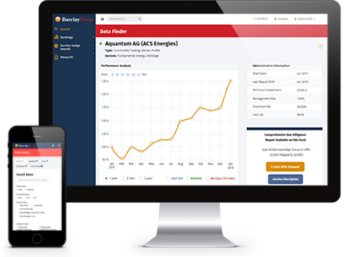Fixed-income arbitrage is an investment strategy that exploits pricing differentials between fixed-income securities.
Before we explain that, let’s review the concept of arbitrage. Arbitrage, at its most simplest, involves buying securities on one market for immediate resale on another market in order to profit from a price discrepancy. But in the hedge fund world, arbitrage more commonly refers to the simultaneous purchase and sale of two similar securities whose prices, in the opinion of the trader, are not in sync with what the trader believes to be their “true value.” Acting on the assumption that prices will revert to true value over time, the trader will sell short the overpriced security and buy the underpriced security. Once prices revert to true value, the trade can be liquidated at a profit. (Remember, short selling is simply borrowing a security you don’t own, selling it, then hoping it declines in value, at which time you can buy it back at a lower price than you paid for it and return the borrowed securities.) Arbitrage can also be used to buy and sell two stocks, two commodities and many other securities.
Although many investors are unfamiliar with the term “fixed-income arbitrage” most have heard of one of its major users: Long Term Capital Management, a hedge fund that in the 1990s realized average annual returns of greater than 40%, then had to be bailed out by several Wall Street firms at the encouragement of the U.S. Federal Reserve Board.
To understand fixed-income arbitrage, it is important to have some familiarity with fixed-income securities. At their most basic level, fixed-income securities are simply debt instruments, issued by private companies or public entities, which promise a fixed stream of income. U.S. Treasuries, corporate bonds and municipal bonds bonds are examples. There are, however, more sophisticated fixed-income securities, such as credit default swaps.
Credit default swaps are complex financial instruments similar to insurance contracts in that they provide the buyer with protection against specific risks. So, for example, say you buy a corporate bond from Company ABC. You think the company will pay you back with interest, but it might default, and you invested a lot of money, so you want some added protection. So, you call your insurance company and ask it to sell you insurance against the possible default of Company ABC’s bonds. Your insurance company charges you a fee for that insurance, just as it would if you were buying car insurance or homeowner’s insurance. But here’s the catch: When it comes to credit default swaps, you don’t have to actually own the asset in order to insure it. Your insurance company is selling insurance on Company ABC’s stock to anyone. In other words, it’s selling pieces of paper—securities that fall into the “derivatives” category—called credit default swaps. And these pieces of paper are traded over-the-counter by sophisticated investors.
The reason for that detailed explanation of credit default swaps, as you might have guessed, is that they are often used in fixed-income arbitrage. In fact, one of the most popular fixed-income arbitrage strategies is called “swap-spread arbitrage.” While swap-spread arbitrage is too complex a topic to explain in full here, it involves taking a bet on the direction of credit default swap rates and other interest rates, such as the interest rate of U.S. Treasuries or the London Interbank Offered Rate (LIBOR, which is the interest rate banks charge each other for loans).
There are many other fixed-income arbitrage strategies, however. Another is called yield curve arbitrage. The yield curve is a graphical representation of how yields on bonds of different maturities compare. When the yield curve is flat, shorter- and longer-term yields are close. When the yield curve is heavily sloped, there is a greater gap between short- and long-term yields. Yield-curve arbitrageurs seek to profit from shifts in the yield curve by taking long and short positions in Treasuries of various maturities.
Another fixed-income arbitrage strategy is capital structure arbitrage, which seeks to profit from the pricing differentials between various claims on a company, such as its debt and stock. For example, a capital structure arbitrageur who believes a company’s debt is overpriced relative to its stock might short the company’s debt and buy the company’s stock.
Fixed-income arbitrageurs must be willing to accept significant risk. That’s because fixed-income arbitrage typically provides relatively small returns, but can potentially lead to huge losses. In fact, many people refer to fixed-income arbitrage as "picking up nickels in front of a steamroller."
Because of the limited returns and huge risks involved, large institutional investors with significant assets—such as hedge funds, private equity firms and investment banks—are the major users of fixed-income arbitrage.
In summary, then, fixed-income arbitrage could be a good investment option, but it is best used by institutional investors who have significant assets and are willing to accept the risks.
Get comprehensive and up-to-date information on 6100 + Hedge Funds, Funds of Funds, and CTAs in the Barclay Global Hedge Fund Database.


